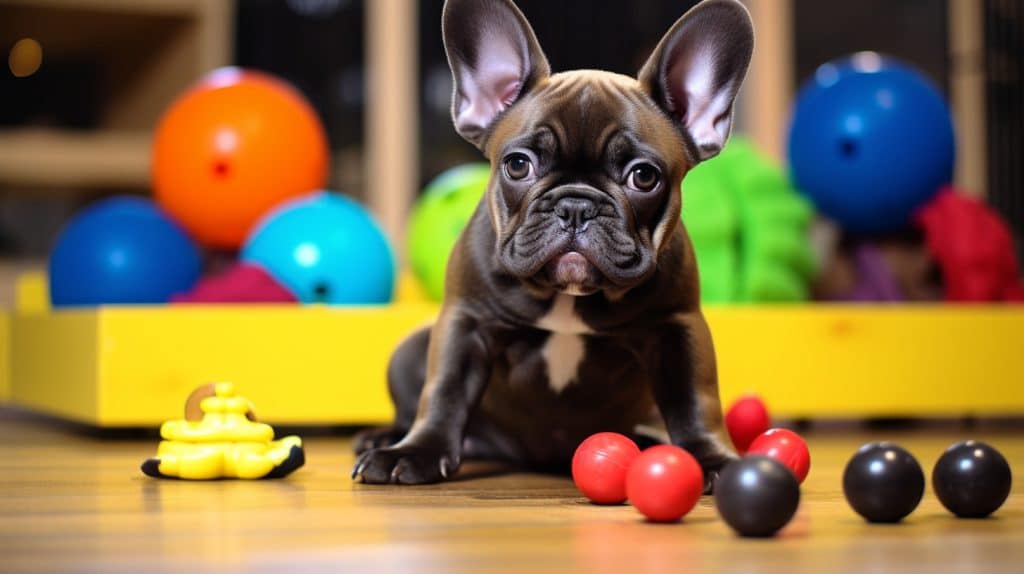Comprehensive Understanding of Brain Training for Dogs
Brain training for dogs is a popular pet care activity that aims teach your dog and challenge it's cognitive abilities. We feel brain training for dogs is beneficial for both pet and owner.
Firstly, it provides mental stimulation and prevents boredom, which can lead to destructive behaviors.
Secondly, brain games for dogs helps to strengthen the bond between a dog trainer and their owner through interactive activities. Moreover, brain training for dogs is suitable for any dog, regardless of their breed or age.
There are several ways to incorporate brain training into your dog's routine. You can browse through a wide range of dog toys and activity kits that are specifically designed to challenge a dog's mental abilities, until your dog has mastered them.
Effective Dog Training Advice and Techniques
Dog training is an essential aspect of owning a pet, and it plays a crucial role in their overall well-being. Brain training for dogs is a concept that has gained popularity among dog owners in recent years. It focuses on stimulating a dog's mental abilities through various cognitive training techniques.

One effective technique that has proven to be beneficial is using a bowl as a training tool. By training your dog to look at certain actions or behaviors with the bowl, such as sitting or staying, you can reinforce positive behavior and provide stimulation.
Another important aspect of dog training is keeping records of your dog's progress. This includes keeping track of their daily activities, such as when they eat, sleep, and go for walks. It is also important to keep track of any accidents or incidents, such as when your dog pees indoors. By maintaining detailed records, you can better understand your dog's behaviors and identify any patterns or issues that may need to be addressed.
Additionally, it is beneficial to read articles and books about dog training. The library of knowledge on dog training is vast, and there are numerous resources available to dog owners.
The Importance of Eye Contact and Attention during Training
During brain training for dogs, one key aspect that cannot be overlooked is the importance of eye contact and attention. Research has shown that dogs who maintain direct eye contact with their owners during training sessions are more likely to make the right decisions. This direct eye contact serves as a secret signal between the dog and the owner, creating a strong bond and facilitating effective communication.
Most dog training programs fail you and your dog because they never address the root cause of your dog's problem behavior. They just give you some cookie-cutter technique to stop biting, chewing or barking – which is short term in its effectiveness at best – again, because it does not address the root cause of the problem.
https://www.braintraining4dogs.com
When a dog maintains eye contact, they are not only focused on the training session, but also on their owner's facial expressions and body language, which helps them to better understand the events taking place. This crucial aspect of training is often overlooked by many owners, but it is an essential ingredient in any successful brain training for dogs’ program.
In addition to eye contact, attention is another key element in effective dog training. The author of “Brain Training for Dogs” stresses the need for owners to give their undivided attention to their dogs during training exercises.
Understanding Dog Behaviors and Ways to Address Them
Understanding dog behaviors is crucial for effective brain training. Dogs, like humans, have their own unique personalities and behaviors that need to be understood and addressed properly.

By understanding why dogs behave the way they do, we can encourage your dog to learn training techniques that are specific to their needs. For example, some dogs may be more prone to anxiety or aggression, while others may have excessive energy or be easily distracted. By identifying these behaviors, we can address them through appropriate training methods and provide brain training games that meets their individual needs.
This can include activities such as puzzle games, enrichment toys, and obedience training. By addressing these behaviors, we can ensure that our dogs are receiving the mental exercise they need for a happy and healthy brain.
The Role of Play in Brain Training
One important aspect of brain training for dogs is the role of play in stimulating their cognitive abilities. Dogs are naturally playful animals, and incorporating playtime and new tricks into their training routine can have significant benefits and help your dog with their mental development.
Toys play a crucial role in engaging a dog's brain and providing them with stimulation. When dogs play with toys, they must use their problem-solving skills to figure out how to retrieve treats or engage with different features of the toy. This kind of play not only exercises their brain but is a good way to teach and also helps improve their focus and concentration.
Interactive toys that require eye contact and attention can further enhance a dog's cognitive abilities.
Integrating Toy Use and Playtime for Stimulation
To provide dogs with effective force-free training, integrating toy use and playtime is essential. Brain training for dogs can be achieved through various methods, and incorporating toys into playtime is a wonderful way to engage your dog and their cognitive abilities.

Search games, for example, are an excellent way to challenge the dog's brain and keep them mentally stimulated. These games involve hiding treats or toys around the house, and the dog must use their problem-solving skills to find them. The importance of such activities cannot be overstated, as they not only provide dogs with stimulation but also help address certain dog behaviors that may arise due to boredom or lack of mental exercise.
Integrating toy use and playtime for stimulation is essential in training modules designed for dogs. The use of toys during playtime can help engage the dog's brain and promote cognitive development. Scatter feeding, for instance, is a technique that involves scattering food or treats in a specific area for the dog or puppy to find. This activity not only provides mental stimulation but also encourages the dog to use their senses and problem-solving abilities.
Feeding Techniques and Food Puzzles for Enhanced Brain Function
Feeding techniques and food puzzles can play a vital role in enhancing brain function in dogs. Incorporating brain training for dogs during mealtime not only provides mental stimulation but also helps to keep pets engaged and focused. By using interactive feeding techniques, such as treat-dispensing toys or puzzle feeders, dogs are encouraged to problem-solve and use their brain to access their food.
Designing Your Own Dog Training System: DIY Guidelines
To design your own professional dog training system, it is essential to understand the concept of brain training for dogs and the various resources available. One way to enhance your dog's cognitive abilities is by participating in dog sports.

These activities not only provide mental stimulation but also strengthen the bond between you and your furry friend. Incorporating toys into your training sessions is another effective way to engage their brain.
Obedience and dog scent training can be incorporated into your DIY training system to challenge your dog's mental abilities further. By exploring articles, books, and online resources on brain training for dogs, you can discover new ways to keep your dog's brain sharp. Remember to provide your dog with plenty of attention and engage them in brain games to ensure their training is both fun and effective.
Setting up a DIY Dog Agility Course at Home
To effectively set up a DIY dog agility course at home, it is crucial to incorporate brain training for dogs into the design. Start by creating various obstacles that will challenge your dog's cognitive abilities. For instance, you can include tunnels, jumps, and weaving poles to stimulate their brain and improve their problem-solving skills.
We know that getting enough physical exercise is important for a dog’s health, but less emphasis is put on the importance of exercising a dog’s mind. Dogs are curious and clever, capable of far more than we often give them credit for.
https://www.barclondon.com
Consider including interactive elements such as puzzles or treat dispensers throughout the course. This will encourage every dog to engage their brain while completing the agility challenges. By combining physical exercise with brain games, you can provide a holistic training experience for your dog's mental and physical well-being.
Scatter Feeding and Dog Puzzle Toys as Training Tools
One of the key aspects of brain training for dogs is the use of scatter feeding and dog toys as training tools. These techniques, popularized by experts like Adrienne Farricelli, tap into the innate problem-solving abilities of dogs.
By scattering their food in different areas or using toys that require them to figure out how to retrieve treats, dogs are engaged in a mentally stimulating activity. Not only does this help keep their brains active and sharp, but it also satisfies their natural instincts to search and work for their food. It is a win-win situation, as you can get your dog to enjoy a fun and rewarding meal while also strengthening their cognitive abilities.
This type of brain training is not only beneficial for dogs' mental well-being but can also help address certain problem behaviors. By providing dogs with opportunities to engage their brains and practice problem-solving, owners can help prevent boredom and offer an outlet for their natural instincts.
Dealing with Setbacks and Adopting Remedies in Dog Training
Dealing with setbacks in dog training can be frustrating, but it is important to remember that it is all part of the learning process. One common setback that owners may encounter is when their furry friend loses interest or becomes bored with brain training exercises.

When this happens, it is time to switch things up and introduce new and exciting challenges to reignite their motivation. Try incorporating different types of brain training for dogs, such as puzzles and interactive toys, to keep your dog engaged and entertained.
Another setback that dog owners may face is when their dog does not seem to be making progress despite consistent training efforts. In this case, it may be helpful to seek guidance from a professional trainer or behaviorist who can provide personalized advice and strategies to address any underlying issues.
Adopting remedies in dog training is crucial to ensure a successful outcome. One effective remedy is to incorporate regular mental and physical exercise into your dog's routine. By providing outlets for your dog's energy and stimulating their brain, you can prevent boredom and promote better focus during training sessions.
Another remedy is to utilize brain training tools such as dog feeder toys. These toys not only provide mental stimulation but also encourage problem-solving skills and slow down the eating process. Additionally, tracking your dog's progress throughout the training stages can help identify areas that need improvement and adjust your training approach accordingly.
Remember, adopting remedies in dog training is all about finding what works best for your pup and tailoring your methods to their unique needs.




